Antiarrhythmic Drugs
Article Sections
Cardiac action potential
The cardiac action potential is created by ion channels that drive electrical current through the myocardium and facilitate the coordinated contraction of the atria and ventricles; sodium (Na+), calcium (Ca2+), and potassium (K+) are the major ions involved. The cardiac action potential differs between 2 distinct types of myocardia (Figure 1):
Nonpacemaker cellsNonpacemaker cells, which include the cells of the atrial and ventricular myocardium, are fast-conducting. The nonpacemaker action potential is composed of the following phases:
- Phase 0 (rapid depolarization): Occurs when the resting membrane potential reaches threshold. It involves rapid Na+ entry into the cell due to the activation and opening of voltage-dependent Na+ channels.
- Phase 1 (early repolarization): Results primarily from the activation of transient outward K
Continue Learning with UWorld
Get the full Antiarrhythmic Drugs article plus rich visuals, real-world cases, and in-depth insights from medical experts, all available through the UWorld Medical Library.
Figures
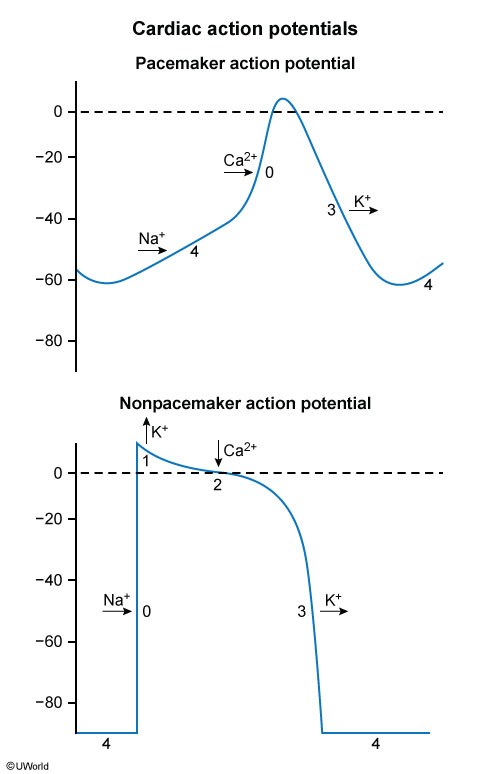
Figure 1
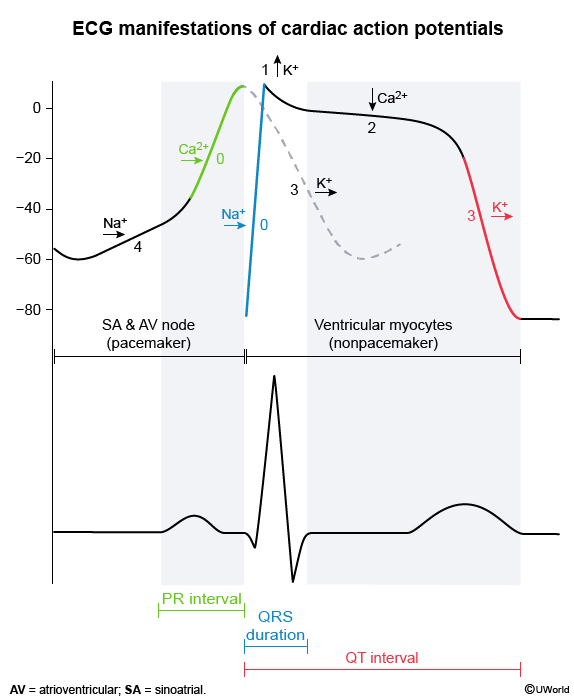
Figure 2
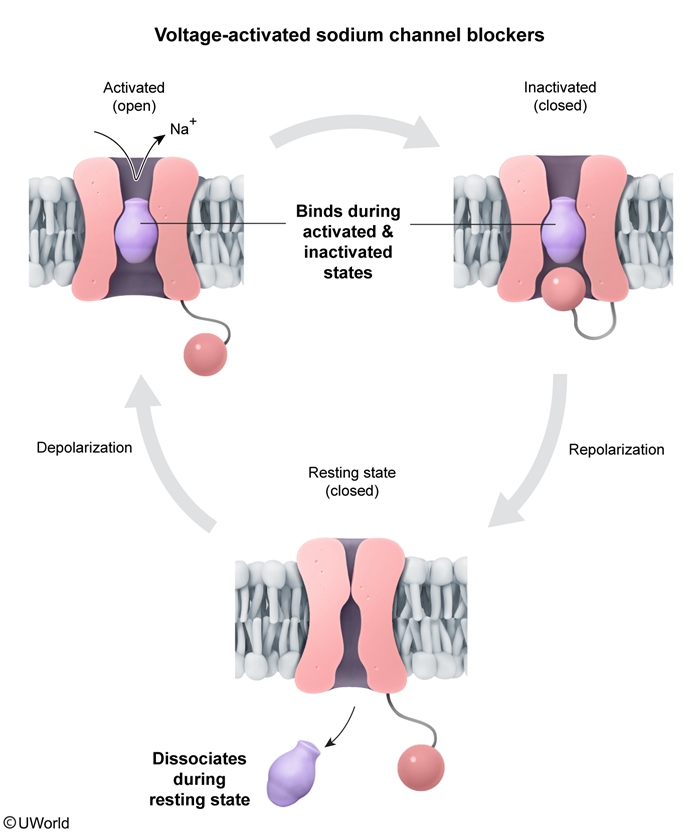
Figure 3
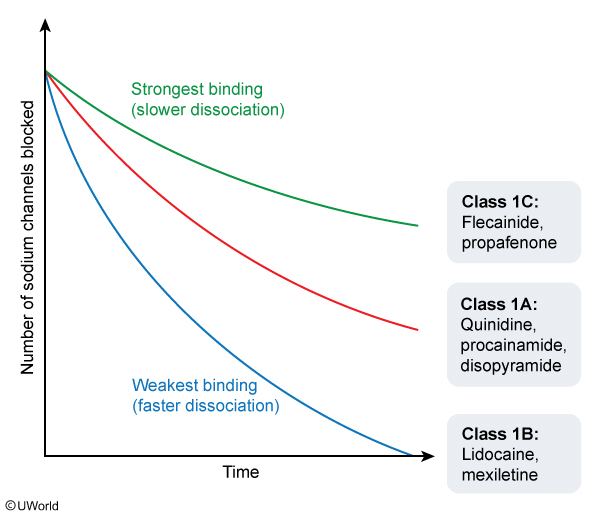
Figure 4
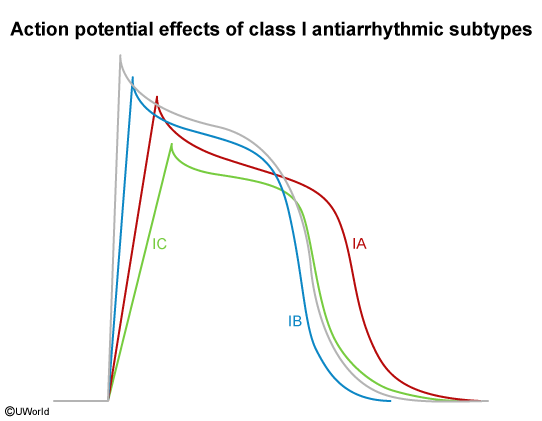
Figure 5
Tables
Table 1